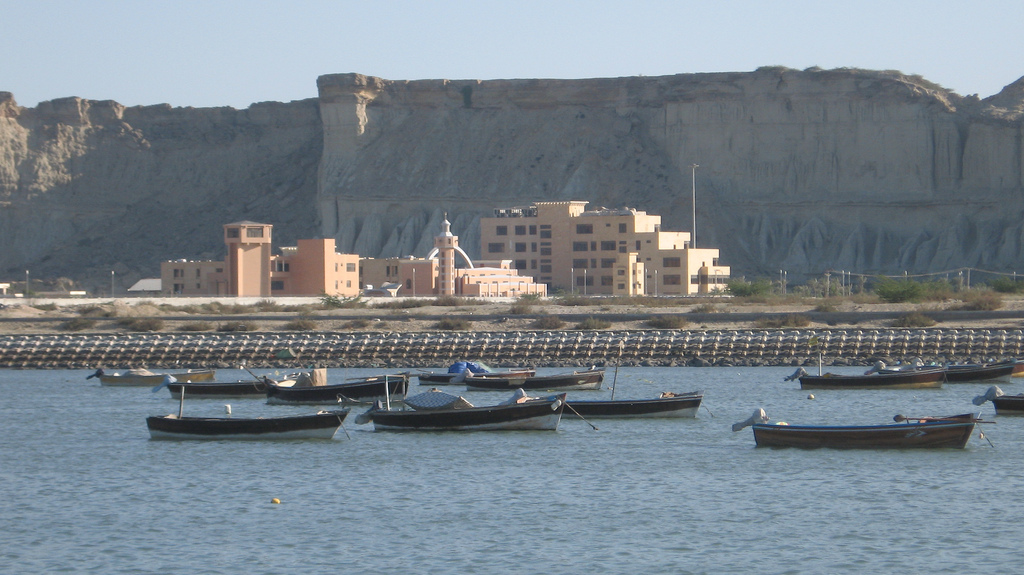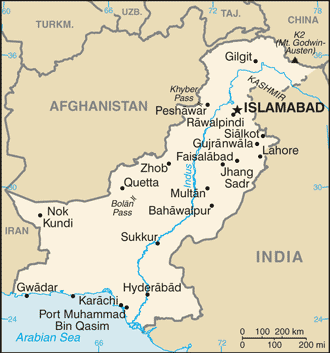Pakistan is extremely interested in the Peace Pipeline project. One of the most acute economic problems facing Islamabad is its catastrophic electricity deficit, which seriously limits the implementation of a wide array of projects aimed at industrializing the country.
China’s proposal to build the “Peace Pipeline” from Iran to Pakistan (which, as we discussed in the previous part of the study, The Wall Street Journal presented as sensational) was in no way unexpected.
Negotiations with the PRC regarding the development of Iranian gas exports (for example, the reanimation of the Iran-Pakistan-In
So far, no official statements have been made regarding the possibility of going from the “Peace Pipeline” project back to the IPI project to India. However, the Wall Street Journal publication, which we discussed in the previous installment of the study, briefly mentions one more topic. The paper, having quoted the price of the “Peace” project at $1.5-1.8 billion, makes a qualifying statement that the price may increase “if an optional Liquefied Natural Gas terminal at Gwadar is included in the scheme.”
As is sometimes said in these situations, “please, tell me more”, since The Wall Street Journal offers no explanation as to what Gwadar has to do with anything and why it’s so interesting to China.
As recently as 15 years ago, Gwadar was a small fishing village at the entrance to the Gulf of Oman, on the shore of the Arabian Sea, about 60km from the Iranian border. And then came the Chinese-Pakistan

Gwadar port, Pakistan, photo by Umargondal, licensed under CC BY 4.0
Chairman Li Keqiang of the PRC State Council paid a visit to Pakistan in May 2013, during which an agreement was reached to create an “international economic corridor” in Pakistan, the CPEC (China-Pakistan Economic Corridor). This system of strategic roads and pipelines, along with its support infrastructure will stretch from Gwadar, through the southern Pakistani province of Balochistan, and then through the northern provinces and the so-called Karakoram Mountain Pass, entering the southwestern part of China’s Xinjiang-Uygur Autonomous Region.
During the same year 2013, Beijing and Islamabad signed an agreement to transfer principal operator rights for Gwadar to the Chinese state company Chinese Overseas Port Holdings. Active work on designing infrastructure for the CPEC corridor then began.
Pakistani President Mamnoon Hussain met with PRC Chairman Xi Jinping during his February 2014 visit to Beijing and confirmed Pakistan’s readiness to do everything in its power to accelerate the creation of the CPEC corridor. Among other things, the two heads of state agreed that the project’s priorities would include the construction of an international airport in Gwadar and of an oil pipeline from Gwadar to China’s Xinjiang.
Beijing made specific details of the CPEC corridor’s funding public in November 2014. China announced that it is ready to invest $45.6 billion into Pakistani energy and infrastructure projects by 2020!!! The China Development Bank and the Industrial and Commercial Bank of China would provide the bulk of the line of credit. $11.8 billion is intended for infrastructure projects, and $33.8 billion is for energy projects. Specifically, according to the CPEC program, $5.9 billion will be invested into roads CPEC, $3.7 billion into the construction of a railroad network, $622 million into the modernization and expansion of the Gwadar port, $44 million for running a fiber-optic cable between China and Pakistan, and this would all be done by 2017.
On April 16, 2015, Reuters reported that during PRC Chairman Xi Jinping’s visit to Pakistan April 20-21, it is expected that a total of about $50 billion in contracts would be signed, of which $46 billion (as stated previously) will be investments into the CPEC corridor.
Apart from this, Reuters believes that the other $4 billion is the price of delivery of 8 submarines to Pakistan, which (attention!) will be based together with Chinese Navy submarines (and, apparently, other ships as well) in the port of Gwadar. And, even though Beijing currently stresses only the strategic commercial importance of Gwadar, most analyst are convinced that the creation here of a large Pakistani and Chinese naval base is a matter of the not-so-distant future.
In light of this, let us remember that back in May 2011, in the context of Pakistani society’s outrage over the American operation to kill Osama Bin Laden in Pakistani Abbottabad, of which even the country’s government was not informed, Pakistani Defense Minister Ahmad Mukhtar stated “We would be … grateful to the Chinese government if a naval base is … constructed at the site of Gwadar for Pakistan.”
Nevertheless, Beijing and Islamabad are currently discussing Gwadar and the CPEC corridor mostly in their economic dimension.
For Pakistan, China’s gigantic investments mean, first and foremost, a very substantial contribution to raising the living standard for the population of the poor and politically unstable Balochistan, as well as providing infrastructural connectedness between the southern and northern provinces. Apart from this, Pakistan, not unfoundedly, is hoping for significant growth in trade relations with China via the CPEC corridor. Military and technical cooperation with Beijing is no less important for Islamabad, given that China is Pakistan’s key supplier of modern weapons.
For China, even not taking into account its strategic military importance, Gwadar guarantees “The Middle Kingdom’s” strong economic presence in the Arabian Sea and the Indian Ocean as a whole, close to the main Middle Eastern, and partially African oil resources, as well as to Qatari liquefied gas, the imports of which will remain “critically important” for the PRC for many years to come.
The CPEC corridor, on the other hand, will allow Beijing to direct a large volume of international trade (including imports of oil and possibly gas from the Persian Gulf and African states) past the “bottleneck” of the Strait of Malacca, between Malaysia and Indonesia. Currently, this flow of trade is often harassed by local pirates and their sudden speedboat attacks. But it isn’t pirates China is worried about. It is well aware that sea transit, including tanker transit, through the Strait of Malacca can easily be halted by the powerful US Navy in the event of a military-politic
Due to the “Malacca problem”, China has long been evaluating the possibility of constructing a bypass, the so-called Thai Canal, similar to the Panama Canal, across the narrow isthmus in Thailand between the Bay of Bengal and the Gulf of Thailand in the South China Sea. But for now, these plans are far from practical realization. And furthermore, the Thai Canal would in now way mitigate the risk of problems with China’s trade routes through the Indian Ocean in the event of conflict with the United States. In this regard, the overland CPEC corridor would be much more reliable.
However, China’s plans for the region do not limit themselves to Gwadar and CPEC. We then need to return to the Peace Pipeline (and possibly the IPI) project.
The fact of the matter is that China’s CNPC petroleum corporation signed a $4.7 billion contract with Iran back in 2004 to participate in the South Pars gas condensate field. However, due to sanctions against Iran, progress had been much slower than planned, which caused Tehran understandable dissatisfaction. When, in turn, the US and EU member states placed new, even stricter sanctions on Iran in 2012, CNPC ceased its participation in the Iranian gas project.
On April 10, 2015, during a visit to China by an Iranian delegation headed by oil minister Bijan Zangeneh, China and Iran signed a series of large-scale oil contracts. Zangeneh then announced that CNPC expressed readiness to return the South Pars project.
This means that, apparently, Beijing intends to use the Peace Pipeline to supply Pakistan (and possibly India) not with Iranian gas, but practically with its own. And since gas production from South Pars is planned to be large-scale, the consequent question arose regarding building a gas liquefaction terminal in Gwadar for shipments of Chinese and Iranian LNG to both Chinese and international markets.
In addition, let us recall that in the middle of the previous decade, when China had not yet secured it positions on Turkmenistan’s giant gas fields, but had already entered the South Pars project with Iran, international press had reported on Beijing’s plans to lay a powerful gas pipeline from Iran to China via Pakistan and the Karakoram Pass.
Now that CNPC has secured the gas from the Turkmen Galkynysh field, and in light of the negotiation of two contracts to supply China with gas from Siberia, this pipeline from Iran has apparently lost its acute relevance. However, the possibility of Beijing returning to the idea of laying down a “Trans-Pakistani
Pakistan is extremely interested in the Peace Pipeline project. Once of the most acute economic problems facing Islamabad is its catastrophic electricity deficit, especially in its least developed provinces, which seriously limits the implementation of a wide array of projects aimed at industrializing the country. The Peace Pipeline project would provide Pakistan with enough gas for almost 5 terawatts of additional electricity generation, which means the opportunity for a new “industrial leap”.
Since, again, the Iranian portion of the pipeline is almost ready, and China promises to build the main portion of the Peace Pipeline from Gwadar to Xinjiang, Pakistan would only need to pay for and build a small portion of the pipeline from the Iranian border to Gwadar. This means that the proposed deadline for launching the Peace Pipeline two years from now cannot be seen as belonging to the realm of fantasy.
The value Pakistan assigns to the strengthening China-Pakistan-I
Finally, on April 10, Pakistan’s parliament officially voted against the country joining “Operation Decisive Storm” in Yemen…
To be continued.
Source (for copy): https://eu.eot.su/?p=8529
This is the translation of the tenth article (first published in “Essence of Time” newspaper issue 124 on April 22, 2015) by Yury Byaly of a series on the new round of global economic warfare. The ultimate goal of this war, of which gas wars is a part, is the weakening and dissolution of Russia. But disruption of Russian supply of gas will lead to lack of gas and rise of prices and some European economies might just not handle this. Since all of the global economy is intertwined, those who started this war want to make not just Russia, but many other countries become weaker in the end.





